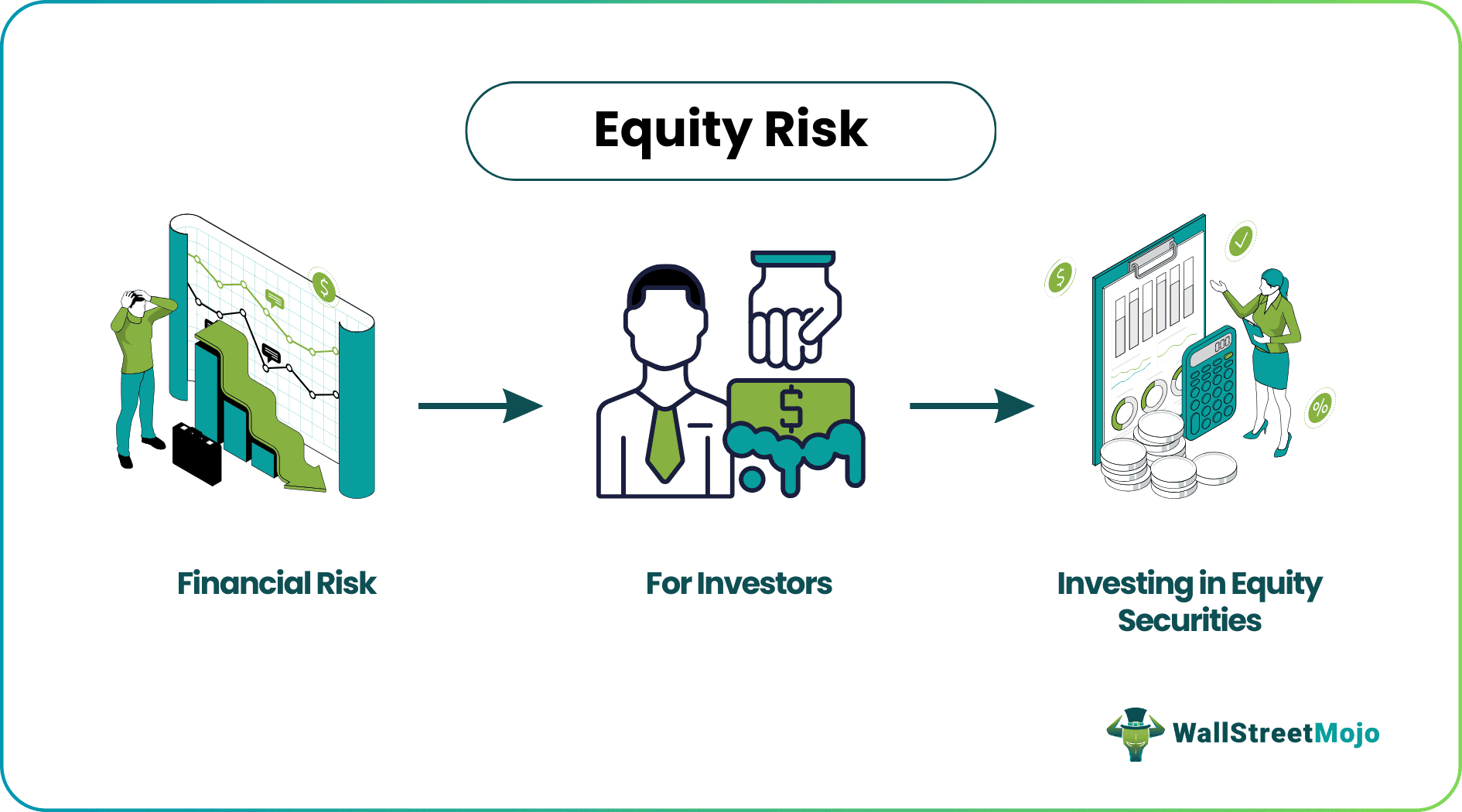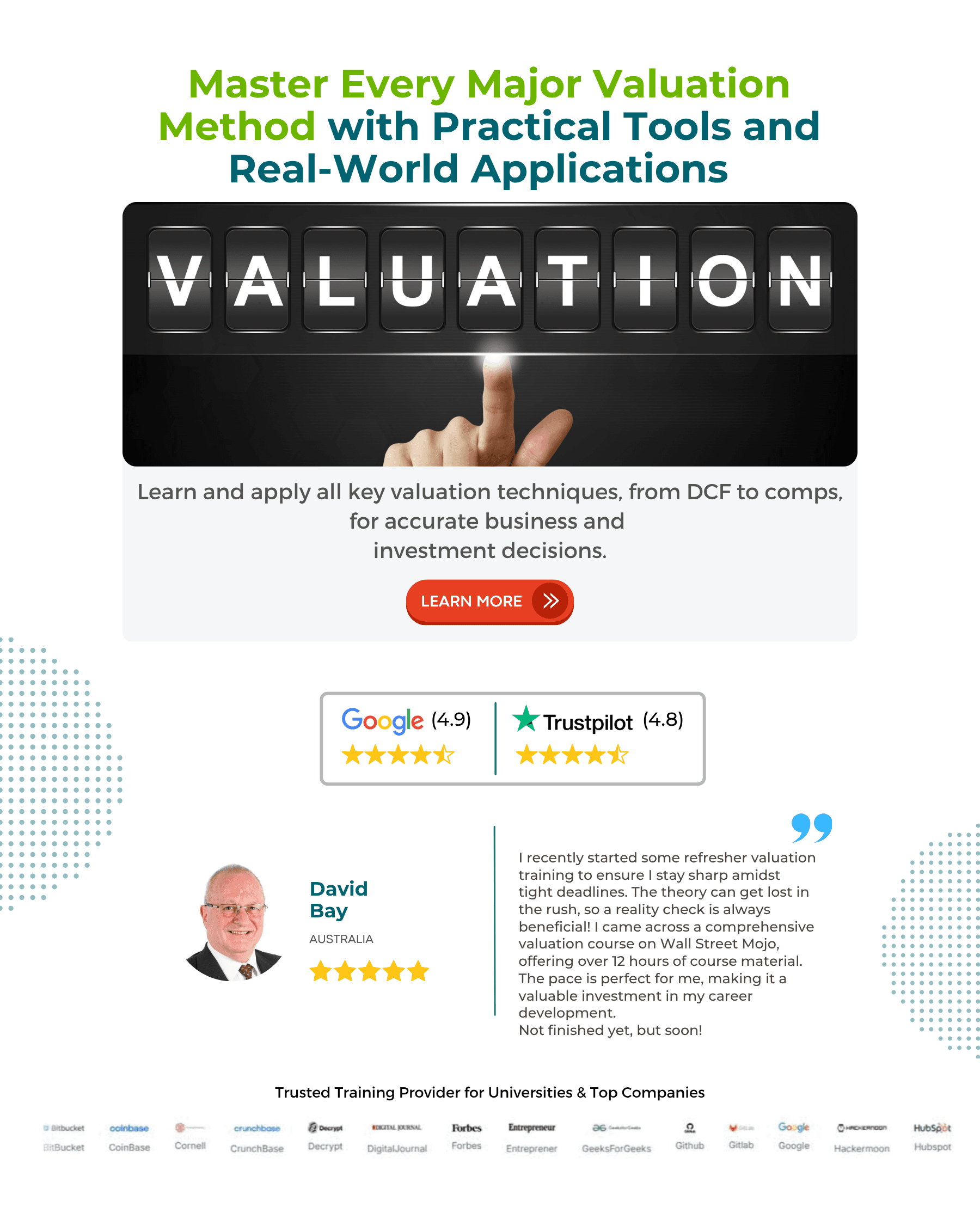Table Of Contents
What Is Equity Risk?
Equity risk is the financial risk associated with holding equity investments, especially shares of stock. The primary aim of managing equity risk is to preserve and optimize the return on equity investments while minimizing potential losses.

The potential for higher returns directly ties to it. Investing in stocks offers more significant wealth accumulation and returns than less risky assets like bonds or cash.
Moreover, investors receive compensation for assuming higher risks along with the potential for higher rewards. It is a fundamental concept in finance and investment that investors must consider when making portfolio decisions.
Key Takeaways
- Equity risk, also known as stock market risk, is the financial risk associated with holding investments in equities, which are company ownership shares or stocks.
- It reflects the possibility of losing part or all of the capital invested in stocks due to factors such as market volatility, economic downturns, changes in investor sentiment, or adverse events affecting specific companies or industries.
- Managing this risk is a fundamental aspect of investment strategy, often achieved through diversification, risk assessment, hedging, stop loss orders, fundamental analysis, etc.
Equity Risk Explained
Equity or stock market risk is the risk associated with investing in stocks or equity securities. Therefore, the investors should maintain sufficient equity risk charges to cover potential losses resulting from fluctuations in the value of their equity holdings. While the concept of equity can manifest in different forms, such as building ownership in real estate properties, it most commonly refers to equity in companies achieved by acquiring common or preferred stocks.
Moreover, investors and traders delve into the realm of equity risk to assess, comprehend, and ultimately mitigate the potential financial losses that could affect their stock portfolios. Hence, this risk analysis is imperative due to the inherent unpredictability of stock prices and the dynamic nature of financial markets. Besides, the equity risk analyst's primary role involves analyzing various factors that can impact the value of a company's stock's value and evaluating an investment portfolio's overall risk profile.
Investors use diversification as a fundamental strategy to mitigate equity risk in investment portfolios. Furthermore, the primary aim of diversification is risk reduction. By holding multiple stocks, investors aim to reduce the concentration of risk in their portfolios. Each stock is subject to factors influencing its price, such as industry trends, company-specific news, or economic conditions.
Thus, diversification involves spreading investments across different assets or sectors to reduce exposure to any single source of risk. During market downturns or corrections, diversification can provide a cushion when the value of most stocks tends to decline. Some sectors or industries may perform better than others during these times, and a diversified portfolio can benefit from this variability. Understanding one's risk tolerance and investment goals is crucial in effectively managing equity risk.
Types
Equity risk assessment involves evaluating and quantifying the potential risks of investing in stocks or equity securities. Hence, let us look into different types of risks associated with stock/equity-
- Market Risk: Also known as systematic risk, market risk refers to the possibility that an investment's value will decline due to broader economic or market factors. It includes factors like economic downturns, geopolitical events, and changes in investor sentiment. Market risk impacts all investments to some extent and cannot be eliminated through diversification.
- Liquidity Risk: The risk that an investor may need more time to be able to buy or sell stock quickly enough at a desired price due to low trading volumes or wide bid-ask spreads.
- Business Risk: Business or company-specific risk pertains to the unique factors affecting a specific company's performance. Therefore, this includes management decisions, competitive pressures, and changes in the industry.
- Tax Risk: Tax risk relates to changes in tax laws or regulations that can impact the after-tax returns on an investment. Investors should consider changes in tax rates, tax treatment of income, or tax incentives, as these can affect their overall returns when making investment decisions.
- Inflation Risk: Inflation risk, also called purchasing power risk, is the danger that the actual value of one's investment will decrease over time due to rising inflation. When the rate of inflation outpaces the rate of return on an investment, the purchasing power of your returns diminishes.
- Interest Rate Risk: The risk that changes in interest rates can impact the value of stocks. Rising interest rates can make fixed-income investments more attractive relative to stocks. Thus, higher interest rates may lead to lower stock prices as investors seek higher returns in fixed-income securities.
Examples
Let us look at the equity risk examples to understand the concept better -
Example #1
Suppose an investor, Jake, holds a substantial portion of his portfolio in technology stocks. Industry risk, known as a specific type of equity risk, affects Jake. Challenges such as regulatory scrutiny, increased competition, or a slowdown in innovation in the technology sector could significantly impact his portfolio. For instance, a sudden change in government policies related to data privacy or antitrust measures could lead to a sharp decline in tech companies' stock prices.
Additionally, if a significant competitor introduces a groundbreaking product, it might affect the competitive position and profitability of the invested technology companies. In this case, Jake is exposed to industry-specific risks that go beyond the broader market movements, highlighting the importance of diversification and careful monitoring of industry dynamics to mitigate such equity risks.
Example #2
Imagine an investor, Karen, who has built a concentrated portfolio heavily weighted towards technology stocks, which have experienced significant growth in recent years. Hence, Karen's optimism about the sector's prospects overlooks the potential risks of such concentration. However, a sudden shift in market sentiment occurs as concerns about regulatory scrutiny and the valuation of tech companies escalate. Karen's portfolio becomes highly vulnerable to market risk and industry-specific challenges in this hypothetical situation.
The value of technology stocks in the portfolio plummets as regulatory uncertainties and competitive pressures intensify. Therefore, this example illustrates the importance of diversification. If Karen had diversified across sectors, the impact of the downturn in the technology sector could have been mitigated by more stable performance in other areas, demonstrating how prudent risk management strategies can safeguard portfolios in the face of unforeseen market developments.
How To Manage?
Investors in the stock market employ a range of risk management strategies to mitigate potential risks and optimize returns. Some of the most prevalent strategies include:
- Diversification: Spreading investments over several asset classes, sectors, industries, and geographical locations is known as diversification. Investors can reduce their exposure to any stock or industry by holding a variety of equities across diverse industries, regions, and market sizes.
- Stop-Loss Orders: Implementing stop-loss orders, which automatically sell a stock if it reaches a predetermined price level. This strategy safeguards against significant losses if a stock's price unexpectedly drops.
- Asset Allocation: Allocate assets strategically based on investment goals, risk tolerance, and time horizon. Thus, adjusting the allocation between stocks, bonds, and other assets helps balance risk and return, mainly during different market conditions.
- Hedging: Employing financial instruments like options or futures contracts to counterbalance potential losses. For example, purchasing put options can serve as insurance against stock price declines.
- Active Portfolio Management: Continuously monitoring and adjusting the portfolio in response to changing market conditions. Hence, active management involves assessing market trends, company performance, and economic indicators to make informed investment decisions.
- Dollar-Cost Averaging: Investing a set sum of money regularly despite changes in the market. Consequently, purchasing more shares when prices are low and fewer when prices are high enables investors to profit from market volatility.
- Fundamental Analysis: Evaluating a company's intrinsic value by analyzing its financial statements, industry trends, and relevant data. Fundamental analysis aims to identify undervalued stocks with growth potential.

